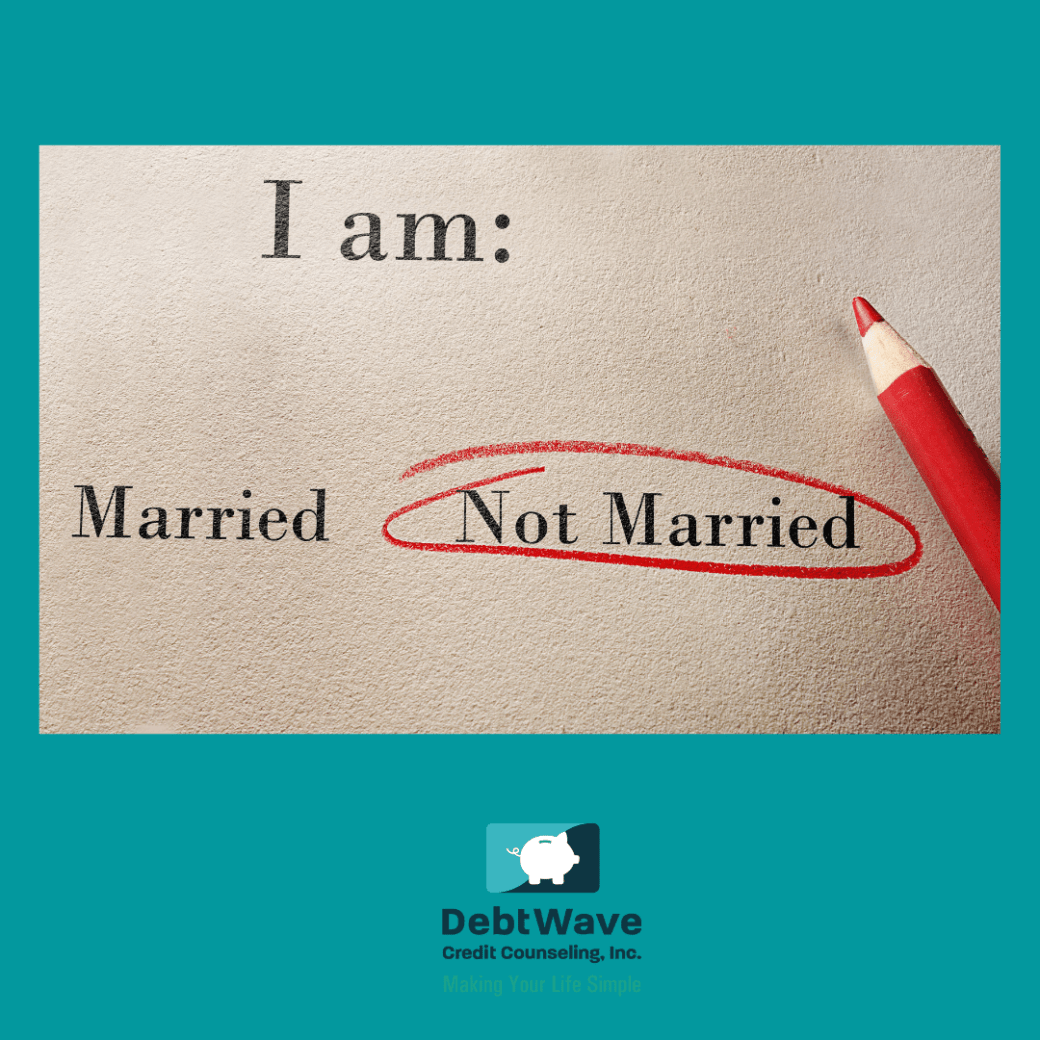When I was single, I believed that married people had it much easier when it came to finances. I believed that two incomes were always going to be more powerful than one income. Plus, married people seemed to benefit from sharing the emotional burden that accompanies finances.
What I mean by that is married people have someone to help them deal with saving, budgeting, paying off debt, while single people must deal with every aspect of their financial lives on their own – even if you hire someone, you must research, find them, and hire them yourself.
But then I got married and realized that although two incomes combined can be incredibly powerful in a positive way, it’s quite rare for two people in a relationship to have the exact same philosophies when it comes to saving, budgeting, spending, investing, and more. And any financial move one partner makes affects both people in the relationship – for better or for worse.
This helps explain why money is cited as the second most common reason for a divorce, just behind infidelity.
In other words, it’s easy to conclude the financial grass is greener on the other side of the relationship spectrum. But now a new survey from the Pew Research Center confirms that being single takes a toll on your finances much more so than being married does – particularly for single men.
Specifically, the study found that the economic gap between single and partnered adults has generally grown wider since 1990, although exceptions do exist.
“Unpartnered adults have lower earnings, on average, than partnered adults and are less likely to be employed or economically independent,” the report found. “They also have lower educational attainment and are more likely to live with their parents.”
Does It Pay to Be Single? Pew Says No
As of 2019, nearly 4 in 10 or 40 percent of Americans are uncoupled, meaning they are neither married nor living with their partner/spouse in a committed relationship. That’s a sharp increase from 29 percent of Americans who identified as uncoupled 30 years prior in 1990.
Some wondered if the dramatic increase in uncoupled Americans was a side effect of young people delaying marriage until they are older, more established financially; but the Pew research found that wasn’t the case.
- In 1990, roughly 24 percent of adults aged 40 to 54, identified as unpartnered, compared to 31 percent in 2019.
- In 1990, 67 percent of individuals identified as married, compared to 53 percent in 2019.
In other words, delaying marriage until you’re in your 30s didn’t explain the significant increase in the number of adult Americans who identified as unpartnered. Nor did it explain the economic hit single people experienced.
American adults who are not married, not cohabiting with a partner, often have worse financial outcomes compared to their partnered counterparts, including:
- Lower earnings
- Less likely to be employed (73% unpartnered men employed, compared to 91% partnered men; 77% single women employed, compared to 74% partnered women).
- Less likely to be economically independent
- Lower educational attainment (26% of unpartnered men have a bachelor’s degree in 2019 compared to 37% of partnered men; 33% of unpartnered women have a degree compared to 43% of partnered women).
- More likely to live with parents (31% unpartnered men vs 2% partnered. 20% men who live at home are aged 40 to 54)
- More likely to experience negative health outcomes
According to Pew, the median earnings for single men in 2019 was $35,600, compared with $57,000 for partnered men. For women, the median earnings for single women is an estimated $32,000, compared to $40,000 for partnered women.
According to the Pew survey, more men identify as unpartnered than women, 39 percent compared to 36 percent, and as Pew noted, this is concerning because single men tend to earn an average of $8,000 less than their married counterparts. The wage gap between partnered and unpartnered women was less.
How much single men earn has a ripple effect on the financial health and well-being, as Pew noted in a 2017 study, that 71 percent of adult Americans agreed with the belief that for a man to be a good spouse or partner, he would have to be able to provide financial support. This compares to 32 percent of adults that agreed with the belief that women need to be financially
The Pew report also found something of a “marriage bonus” for people who have tied the knot versus partners who are simply cohabiting.
- 73% of single men were employed in 2019, compared with 91% of partnered men.
- 89% of men living with a partner are employed, compared with 92% of married men.
- 77% of single women were employed in 2019, compared to 74% of partnered women.
Explaining the Financial Gap
Researchers have considered why this relationship between partnership status and economic outcomes exists, particularly for men.
- Is it driven by the fact that men with higher levels of education, higher wages, and better prospects for the future are more desirable potential spouses?
- Or is there something about marriage or partnership that gives a boost to a man’s economic outcomes?
The research suggests that both factors are at play.
Married men earn more because high earners are more likely to marry in the first place. Cohabiting men also receive a wage premium. In addition, marriage or partnership may make men more productive at work, thus adding to the wage premium that already exists.
Less attention has focused on the benefits of a partnership for women, but marriage and cohabitation are associated with wage gains for childless women. The effects may be more modest for women, but marriage benefits men’s and women’s wages through similar processes.


